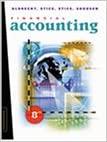Question
Question - The account balances as at December 31, 2018 are as follows: Cash $602,900; Accounts receivable $10,000; Merchandise inventory $3,000; Prepaid rent $3,150; Equipment
Question - The account balances as at December 31, 2018 are as follows: Cash $602,900; Accounts receivable $10,000; Merchandise inventory $3,000; Prepaid rent $3,150; Equipment $55.000; Accumulated depreciation $13,750; Land $40,000; Accounts payable $0, Long-term note payable $200,000; Common shares $440.000; and Retained earnings $60,300.
The following transactions and events occurred in 2019.
Jan. 1 - Issued $50,000 of 5% preferred shares for cash.
Jan. 1 - sold the equipment at its written down value (book value) for cash.
Jan 1 - Acquired new equipment for $150.000 cash. The new equipment has an estimated useful life of 15 years and no expected residual value
Apr. 1 - purchased inventory for $80,000 cash from ordinary suppliers.
July 1 - Paid rent in advance of $3,200 on a six-month office lease.
Aug. 1 - Made cash sales of $150,000. The related cost of goods sold was $65,000.
Sept. 1 - Purchased additional land for cash of $20,000.
Oct. 31 - All remaining accounts receivable were collected.
Dec. 30 - various operating expenses totalled $40,000. All were paid in cash except for $5,000 for utilities, which will be paid in January.
Dec. 31 - Paid the annual dividend on the preferred shares, and a 5 cent dividend per common share.
Dec. 31 - paid the interest on the bank loan.
Dec. 31 - Recorded depreciation for the new equipment.
Dec. 31 - Recorded rent expense for 2019.
Dec. 31 - Paid cash of $3,800 for income taxes.
Required:
- Using the transactions-based approach (tabular analysis), record the above transactions and events for 2019. Determine the ending balances for all accounts that are included in the tabular analysis.
- Prepare an income statement for the year 2019.
- Prepare a statement of changes in retained earnings for the year 2019.
- Prepare a balance sheet as at December 31, 2019.
- Using the financial statements you prepared, calculate the following:
- Return on assets ratio
- Return on equity ratio
- Gross profit percentage
- Return on sales ratio
- Net income to sales ratio
- Earnings per share
- Dividend pay-out ratio
- Receivables turnover ratio
- Inventory turnover ratio
- Asset turnover ratio.
- Current ratio
- Quick ratio
- Debt to equity ratio
- Debt to assets ratio
Step by Step Solution
There are 3 Steps involved in it
Step: 1

Get Instant Access to Expert-Tailored Solutions
See step-by-step solutions with expert insights and AI powered tools for academic success
Step: 2

Step: 3

Ace Your Homework with AI
Get the answers you need in no time with our AI-driven, step-by-step assistance
Get Started


